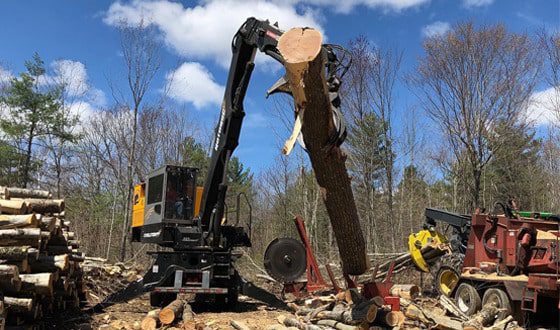CUTS
No matter what your reasons are for harvesting trees from your forested land, you need to keep in mind the various cutting methods of logging.
Forest management is a diverse industry that is constantly evolving. In the past conventional logging practices had little regard for the environment and conservation. As a result, clearing land and large-scale deforestation was the go-to practice employed by many logging companies. Trees are still a valuable commodity; however, the forest they grow on requires proper management so that they may grow sustainably and continue to provide a habitat for indigenous wildlife, as well as a haven for the natural flora that grows in it.
No matter what your reasons are for harvesting trees from your forested land, you need to keep in mind the various cutting methods of logging. Each method has its own merits and drawbacks. You need to be aware of the ones that would be the most suitable for you. They must align with your plans, encourage sustainability, and should be in line with the rules and regulations stipulated by forest governing bodies in your region.
Even Aged Management
Shelterwood System
An even aged method of regenerating forest stands where the overstory is removed in intervals roughly 15 years apart.
Long shelterwood method is a cutting plan where a forest stand is regenerated in three entries.
- The first entry is designed to tend the stand, removing at risk and poorly formed trees. Crop trees are identified, retained, and thinned around to focus site resources on the best growing stock. This is a fairly light entry removing about 1/3 of the growing stock. The establishment of regeneration is not an objective.
- The second entry is designed to initiate regeneration by removing about ½ of the stand volume. This can be accomplished evenly throughout the stand, or in small groups that vary in size relative to the stand conditions and species composition.
- The last entry, some 15 or so years after the second entry, is designed to release the regeneration established during the second entry. This entry is often referred to as an overstory removal as the balance of the mature stand is harvested. Some overwood can be retained to facilitate habitat or structural objectives of the landowner.
Clearcut
Clearcutting is an even-aged regeneration method where all of the trees in a stand are removed at one time. This creates an environment where more shade intoleratnt trees are allowed to become established and all of the trees in the new forest stand are approximately the same age. This method works well with more shallow rooted tree species like red spruce and balsam fir which is more of a northern forest type. These stands typically would not remain windfirm under different regeneration methods like shelterwood. The forest types we typically encounter in the southern portion of our service area, like red oak and white pine do not typically require this more industrial type regeneration method. The exception would be severely high-graded stands where all of the well formed trees have been removed during prior treatments.
Uneven Aged Management
Shelterwood System
Unevenaged management is a planned sequence of treatments or cuts designed to establish and maintain a forest stand with at least three distinct age classes. This is typically accomplished with single tree selection, group selection, or a combination. These treatments are typically more frequent than even aged methods and removal less volume and value each time but can be a good option for those forest landowners looking for more periodic income.
· Single tree selection is a cutting method where individual trees of all size/age classes are removed more or less uniformly throughout the stand to promote the growth of the remaining trees and to provide space for regeneration. A portion of the mature trees are removed during each entry as are the malformed and diseased trees in the younger age/size classes.
· Group selection is a cutting method where trees are removed and new age classes are established in small groups. The goal here is similar to that of single tree selection where a portion of the older age classes are removed while also tending the younger age classes. The difference is that the removals are concentrated in small groups or patches rather than uniformly throughout the stand.
Have Logging Needs?
Our team is well experienced and ready to accept any challenge. Just ask.

